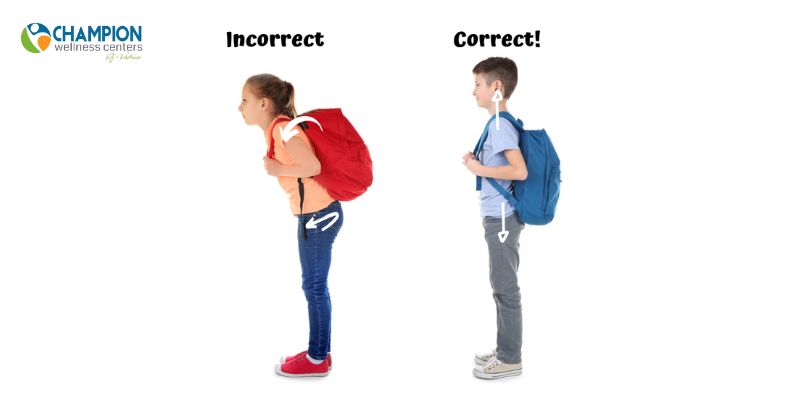Parents strive to provide the best care and support for children, ensuring their overall well-being. One aspect that often goes unnoticed is the importance of choosing the right backpack for kids. Backpacks are essential for carrying books, school supplies and personal items, but if not selected carefully, they can lead to posture problems, discomfort and even injury.
Selecting the appropriate backpack is crucial because it directly impacts your child’s musculoskeletal health. A poorly designed or improperly worn backpack can strain the spine, shoulders and neck, leading to discomfort and potential long-term issues. By understanding the key factors to consider when choosing a backpack, parents can ensure their child’s well-being and minimize the risk of musculoskeletal problems.
Factors To Consider When Choosing A Backpack

#1 Size & Fit
The size and fit of a backpack play a significant role in maintaining proper posture and reducing strain on the body. Choose a backpack that matches your child’s torso length and width. The height of the backpack should extend from approximately two inches below the shoulder blades to waist level. Look for backpacks with adjustable shoulder straps and a waist belt. These features help distribute the weight evenly across the body, reducing strain on the back and shoulders. Opt for a backpack with multiple compartments. This allows for even weight distribution and prevents excessive pressure on a single area of the spine.
#2 Backpack Design

The design of the backpack significantly affects its functionality and comfort level. A backpack with padded back and shoulder straps helps cushion the load and adds an extra layer of comfort. Compression straps assist in keeping the contents of the backpack secure and close to the body, reducing the strain caused by excessive movement. Look for backpacks that have a contoured design to match the natural curve of the spine. This helps maintain proper alignment and reduces the risk of postural issues.
#3 Weight Of The Backpack
One of the most critical factors to consider is the weight of the backpack itself. As a general rule, the backpack should not exceed 10-15% of your child’s body weight when fully loaded. Anything beyond this range can strain the back and shoulders, leading to discomfort and potential injury. Encourage your child to pack only the essentials and leave unnecessary items at home or in a locker.
Tips For Safe Backpack Use
Selecting the right backpack is only the first step. It’s equally important to ensure your child uses the backpack correctly to maintain proper spinal health. Encourage your child to use both shoulder straps to distribute the weight evenly across the back and shoulders. Wearing a backpack on one shoulder can lead to muscle imbalances and strain. If the backpack has a waist belt, make sure your child uses it. The waist belt helps support the weight and prevents excessive sway, reducing the strain on the back. Regularly check your child’s backpack and remove unnecessary items. Encourage them to carry only what is required for the day to minimize the weight on their back. Teach your child the correct way to lift a backpack– by bending at the knees and using their leg muscles rather than straining their back. Place heavier items closer to the center of the backpack, so the weight is evenly distributed. This prevents excessive strain on one side of the body.
Summary:
Choosing the right backpack is essential for your child’s spinal health and overall well-being. By considering factors such as size, fit, design and weight, you can significantly reduce the risk of posture problems, discomfort and injury. Additionally, promoting safe backpack use through wearing both shoulder straps, using the waist belt, lightening the load and teaching proper lifting techniques further ensure your child’s musculoskeletal health.



